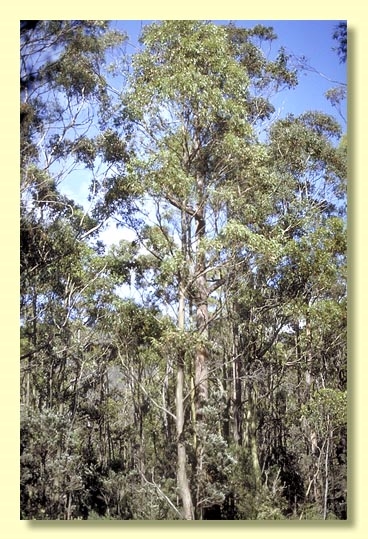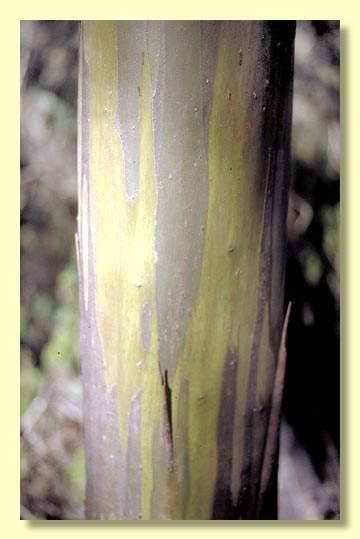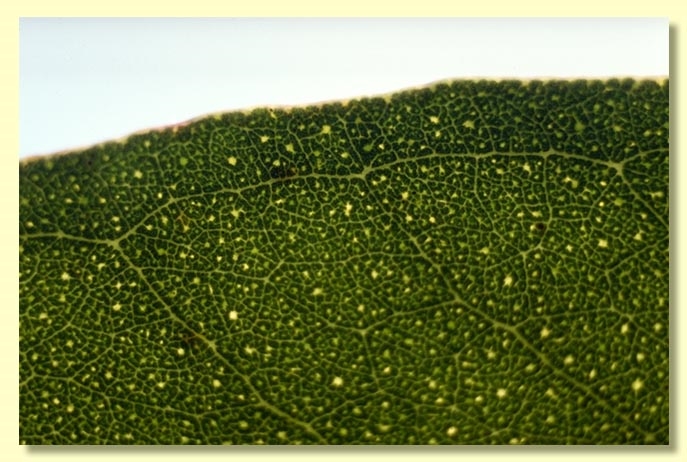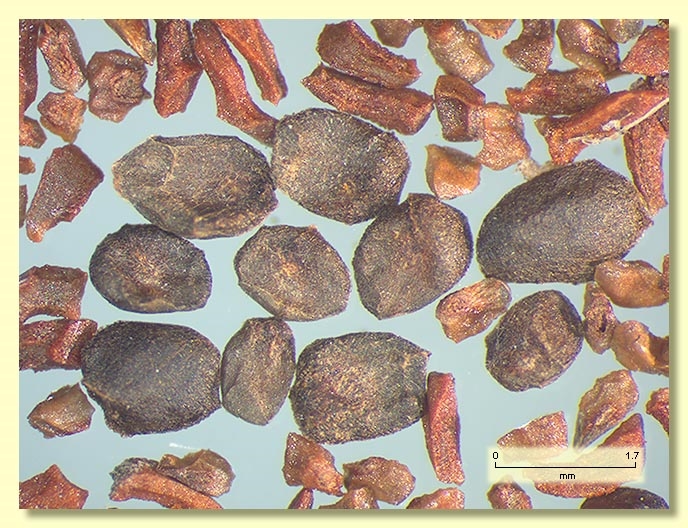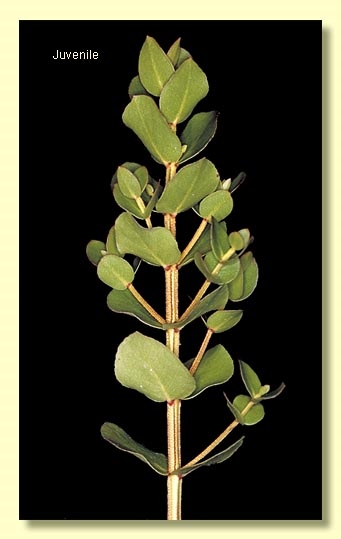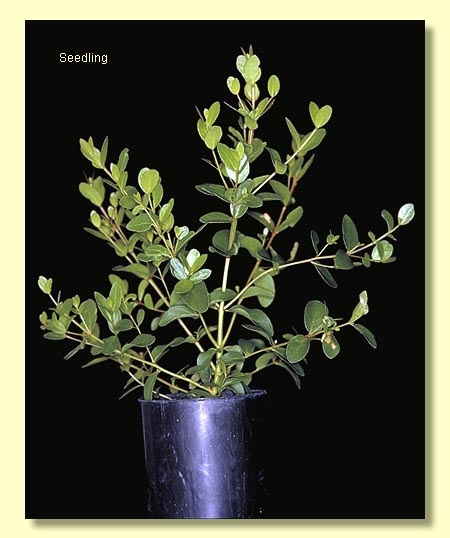Euclid - Online edition
Eucalyptus subcrenulata
Eucalyptus | Symphyomyrtus | Maidenaria | Euryotae | Semiunicolores
T: Mt Field East, Tasmania, Mar. 1906, J.H.Maiden s.n.; holo: NSW; iso: K.
Bark smooth, pale grey or brown to yellow-green, horizontal black scars often present.
Juvenile growth (coppice or field seedlings to 50 cm): stem square in cross-section and winged on younger growth, usually warty; juvenile leaves opposite and sessile for at least 25 nodes becoming alternate on coppice ca 1–1.5 m tall, orbicular to ovate becoming elliptical, 3–8.5 cm long, 3–5 cm wide, margin crenulate, glossy, green.
Adult leaves alternate, petiole 1.5–3.7 cm long; blade lanceolate to ovate, 5.2–13.5 cm long, 2–4.5 cm wide, base tapering to petiole, margin entire to subcrenulate, concolorous, glossy, green, side-veins greater than 45° to midrib, densely reticulate, intramarginal vein well removed from margin, oil glands island and intersectional.
Inflorescence axillary unbranched, peduncles 0.2–0.6 cm long, buds 3 per umbel, sessile (rarely the central bud with pedicel to 0.2 cm long). Mature buds ovoid to obovoid, 0.6–0.8 cm long, 0.4–0.6 cm wide, green to yellow and brown, scar present, operculum rounded to beaked, stamens inflexed or irregularly flexed, anthers cuboid to globoid, versatile, dorsifixed, dehiscing by longitudinal slits (non-confluent), style long, stigma blunt, locules 3 or 4, the placentae each with 4 vertical ovule rows. Flowers white.
Fruit sessile, hemispherical to campanulate, 0.5–0.7 cm long, 0.5–0.9 cm wide, often angled longitudinally, disc level or descending, valves 3 or 4, exserted or near rim level.
Seeds dark brown, grey or black, 1.3–2 mm long, ovoid or flattened-ovoid, often pointed at one end, dorsal surface smooth or shallowly pitted, hilum ventral.
Cultivated seedlings (measured at ca node 10): cotyledons bilobed to oblong; stems square in cross-section and sometimes winged on lower parts, usually warty; leaves sessile or shortly petiolate, opposite for at least 16 nodes, orbicular to cordate or broadly elliptical, 3–6 cm long, 1.3–3.2 cm wide, base rounded to tapering, margin distantly crenulate or entire, apex rounded to pointed, only slightly discolorous, glossy, green.
Flowering has been recorded in January, February, March, April, May, November and December, with peak flowering in January, February and March (see Williams & Potts, 1996, p. 111).
A small to medium-sized tree of highlands in central and western Tasmania, e.g. Mt Field National Park, the Western Tiers, eastern Central Plateau.
E. subcrenulata is one of the yellow gums with yellowish smooth bark and a crown of glossy green leaves; also notable for the thick, roundish, subcrenulate, glandular juvenile leaves on square stems.
Eucalyptus subcrenulata belongs in Eucalyptus subgenus Symphyomyrtus section Maidenaria, a large group of species more or less restricted to south-eastern Australia, characterised by bilobed cotyledons, simple axillary inflorescences, buds with two opercula, stamens with versatile anthers and flattened seeds with a ventral hilum. Within this section, E. subcrenulata, with four other species, forms series Semiunicolores having smooth bark, subcrenulate and strongly glandular juvenile leaves opposite for many nodes, a crown of green, densely to very densely and finely reticulate and highly glandular adult leaves, buds in threes, and sessile fruit with relatively prominent valves. Three of the species in this series are closely related Tasmanian endemics, viz. E. johnstonii, E. subcrenulata and E. vernicosa.
E. subcrenulata is often a smaller tree but may also grow quite tall. It has smaller buds and fruit and occurs on drier sites than E. johnstonii. These two species form a morphological continuum. E. vernicosa is a small-leaved shrub of exposed high mountain areas.
The remaining two species in series Semiunicolores, E. imlayensis and E. elaeophloia, are high altitude localized endemics in southern New South Wales and Victoria respectively and have more greyish green juvenile leaves.

